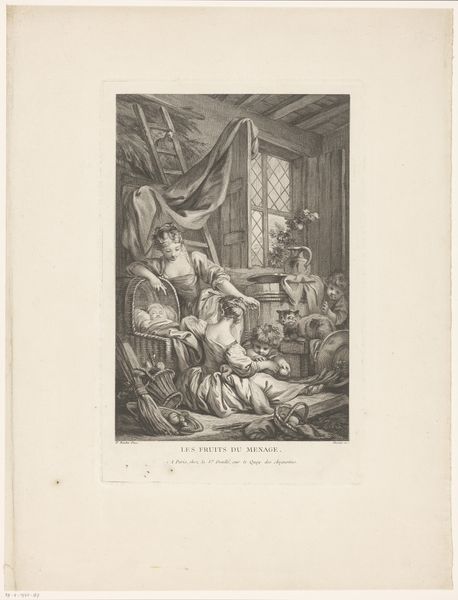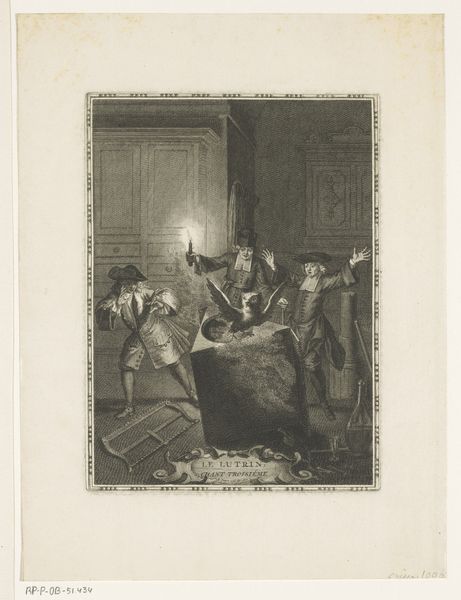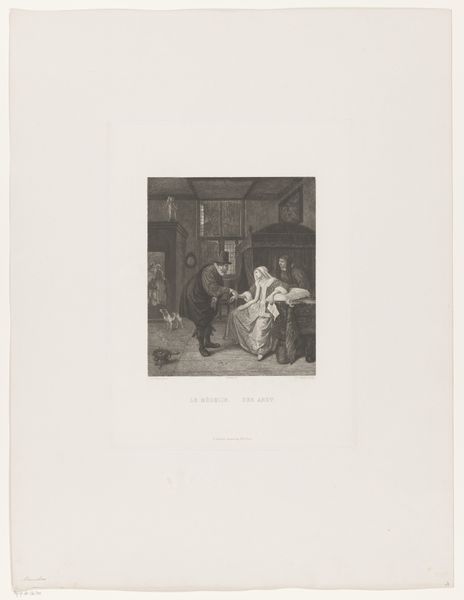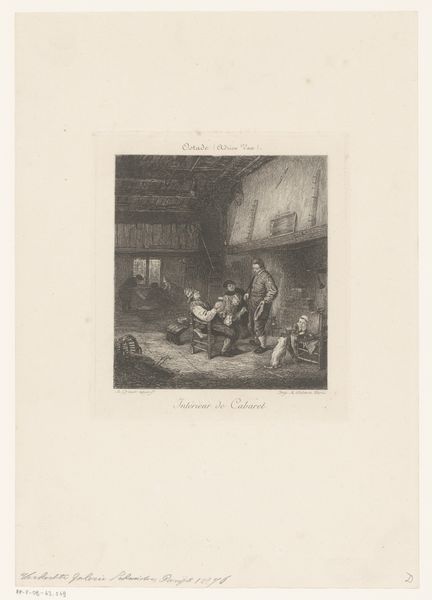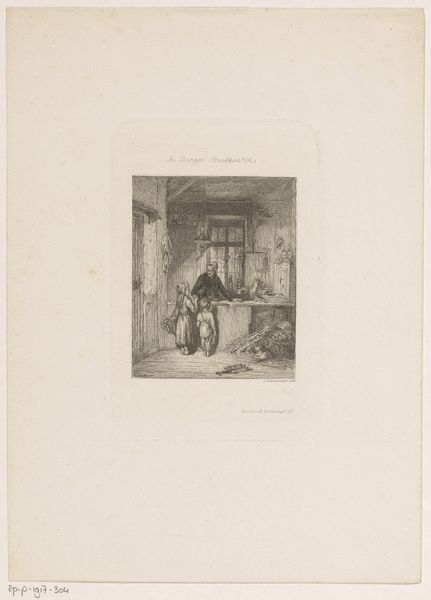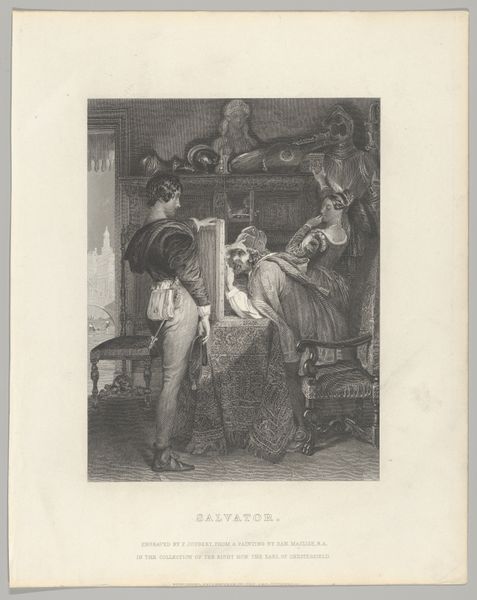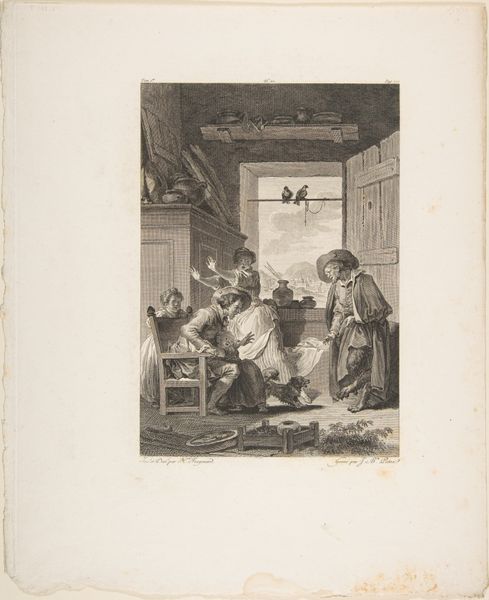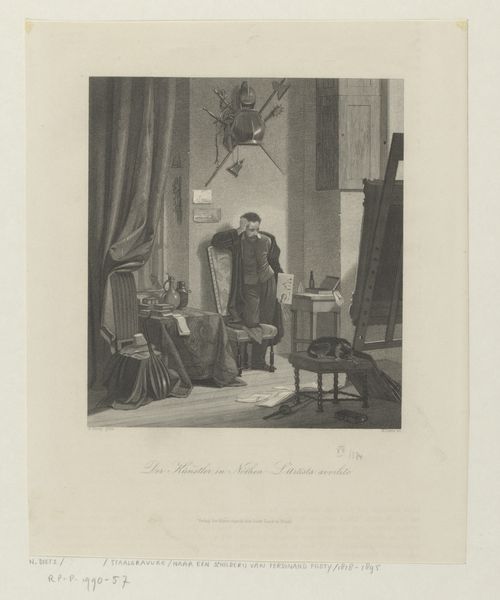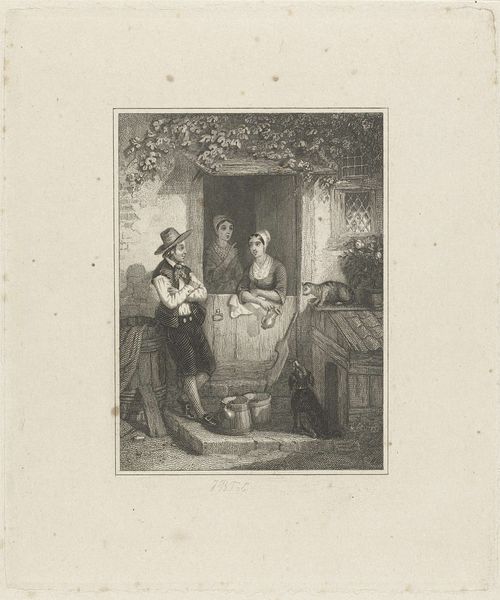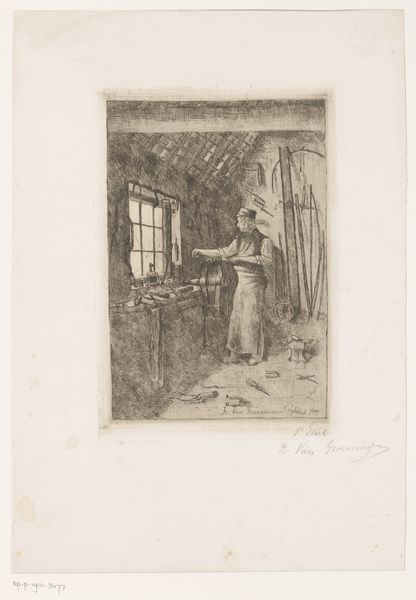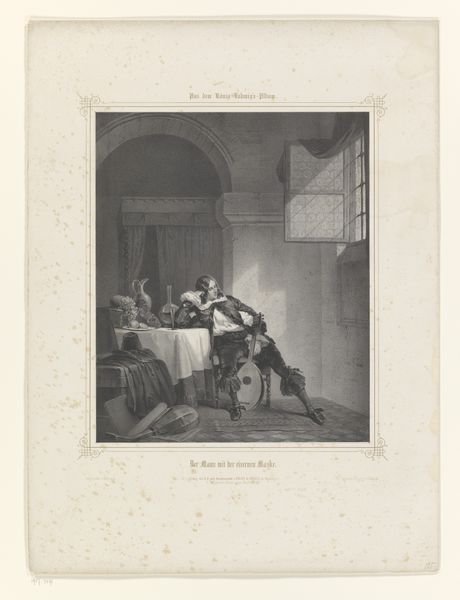
Willibald Pirckheimer bezoekt het atelier van Albrecht Dürer c. 1840 - 1880
0:00
0:00
print, engraving
#
portrait
# print
#
old engraving style
#
archive photography
#
11_renaissance
#
historical photography
#
genre-painting
#
history-painting
#
academic-art
#
engraving
Dimensions: height 312 mm, width 227 mm
Copyright: Rijks Museum: Open Domain
Curator: This engraving by Johann Leonhard Raab, dating from about 1840 to 1880, is titled "Willibald Pirckheimer Visits the Studio of Albrecht Dürer". It’s a fascinating glimpse into the art world of the Renaissance, or at least, how the 19th century imagined it. Editor: My initial impression is one of detailed quietude. The monochrome palette and the textures created through engraving offer a stark contrast between light and shadow, focusing my eye intently on the scene. It feels like a frozen moment in a bustling artistic life. Curator: Exactly! It’s important to remember the context here. Raab, working centuries after Dürer, is reconstructing a historical moment. Pirckheimer, a humanist and Dürer's close friend, is depicted visiting the artist's studio. It highlights the important patronage system and the intellectual milieu in which Dürer operated. The engraving served as a reminder of a great past for German nationalism. Editor: And Raab really emphasizes that history through composition. Note the layering of forms—the figures, the easel, the window—all creating a depth that draws the eye into Dürer’s workspace. The window showing the distant architecture becomes an intentional symbol that reflects Dürer’s external ambitions and public engagement. Curator: Precisely. The print also highlights the 19th-century understanding of the Renaissance artist. It places emphasis on Dürer's workshop as not just a space of craftsmanship, but of intellectual exchange. Look at how Pirckheimer looms, dominating the scene in his scholarly dress. This is about elevating the status of the artist through association with learned society. Editor: The engraving's technical detail, however, also deserves recognition. Look at how the fine lines render textures—the folds of the fabric, the wood grain of the easel—everything carefully delineated. Even without color, Raab conveys materiality in ways that signal the different states of things present in the depicted workspace. Curator: I find it fascinating how an artist like Raab uses a historical subject to make a statement about his own time. By celebrating the connection between art, intellect, and patronage in the Renaissance, Raab’s engraving asserts art's ongoing importance in the construction of modern German identity. Editor: Indeed. Focusing on the formal construction in turn makes evident the subtle hand of Raab and his vision, something that provides both beauty and substance for reflection on art historical narratives.
Comments
No comments
Be the first to comment and join the conversation on the ultimate creative platform.
